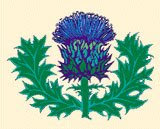THE RISK OF DARKNESS
By Susan Hill
The following contains some revelations about the plots of all three Simon Serrailler novels which might be considered spoilers.
The Risk of Darkness is a book about life changes and how people respond to them. Although classified as a crime novel, it is much more than that. The crime and the criminal are a focal point around which other plots move, but crime is a plot device. This is not a who-done-it.
The crime is the abduction and murder of children. The criminal, revealed early on in the book, is Edwina Sleightholme, who prefers to be called Ed, a complex character whose psychological makeup and motivation are not fully explored in this book, leaving this reader longing for more.
The Risk of Darkness is the third in the Simon Serrailler series by Susan Hill. The series is a progression in time, meaning that the reader who has read the first two in the series will better understand references to the past in this, the third.
There are several concurrent plot lines and themes in The Risk of Darkness. The exploration of how people respond to death is a central theme.
Two deaths continue to haunt Simon: the death of Freya Graffham, a woman he was developing feelings for in the first book of the series, The Various Haunts of Men; and the death of his sister Martha, which took place in the second book, The Pure in Heart. These unresolved grievings have Simon feeling dissatisfaction with both his work and his personal life.
Max Jameson's wife Lizzie dies an agonizing death. Max's grief drives him into insanity.
Jane Fitzroy's mother is murdered, and Jane begins to question her own commitment to her position as an Anglican priest. The death of Lizzie Jameson and Max's plunge into insanity also factor into Jane's turmoil.
Marilyn Angus responds to the death of her husband and the presumed death of her son David with a matter-of-factness approach to getting on with life, although this reaction crumbles in the end.
Richard Serrailler, father to Cat and Simon, handles the death of his wife Meriel with a surface calmness. One suspects, however, that he is suppressing his grief and it will come to the fore at some point in the future.
Other life changes are faced by characters in the book. Simon's sister, Cat, and her husband Chris contemplate a move to Australia as an antidote to Chris's dissatisfaction with his work as a doctor, what seems in his case to be a classic case of a mid-life crisis.
Simon is contemplating changes in his life and in his career. He seems at a crossroads, not sure which way to turn. Simon is approaching his 37th birthday and so he too may be in the midst of a mid-life crisis.
By the end of the book Ed has come to the realization that she will never again be free, and the reader is left wondering how she is going to deal with this realization.
Three women are assaulted in the course of the book, and each woman deals with the aftereffects of the assault differently.
Cat, also a doctor, is assaulted while on a nighttime home visit. She is shaken by the assault and begins to reevaluate her life.
Magda, who has been assaulted in her home in London, responds by reasserting her independence and insisting on returning to her home, where she is later murdered.
Jane, who is Magda's daughter, is also assaulted in her home in Lafferton and responds by reconsidering her commitment to her career as an Anglican priest.
Mother-daughter relationships are also explored in this book.
The relationship between Cat and her mother Meriel occupies little space in this novel, although their relationship has been explored in more detail in the two previous novels.
Jane and Magda are considered from the perspectives of their very different responses to being assaulted in their homes, as well as their conflict over Jane's calling to the priesthood.
Kyra is a young girl who has been befriended by her neighbor Ed. While the reader is privy to Ed's thoughts about Kyra being safe and thus not in danger of being abducted and murdered, we do not understand why this is so. Kyra shares some personality traits with Ed, and I was left wondering if the relationship between Kyra and her mother Natalie might be similar to Ed's childhood relationship with her mother Eileen.
The relationship between Edwina and Eileen is tantalizingly short on detail. We view their past through the selective memories of Eileen only.
When I read a book, one thing that plays a role in determining whether I like it or not is whether I care about the characters. I cared a lot about Simon and Freya Graffham in the first book of the series, The Various Haunts of Men, the ending of which I found shocking, probably contributing to my very strong anticipation for the second book. I am left at the end of The Risk of Darkness with a similar longing for the next book in the series. I want to know more about Ed, her past and how she responds to the realization that she will never be free again.
Edwina Sleightholme is viewed by Simon as the personification of evil. Yet Ed is not a one-dimensional character, and while I share Simon's revulsion at what she has done, I am left wanting to know more of what shaped her personality, how she came to do the things she did. I do hope Susan Hill gives us more about Ed in future novels.
Subscribe to:
Post Comments (Atom)

No comments:
Post a Comment